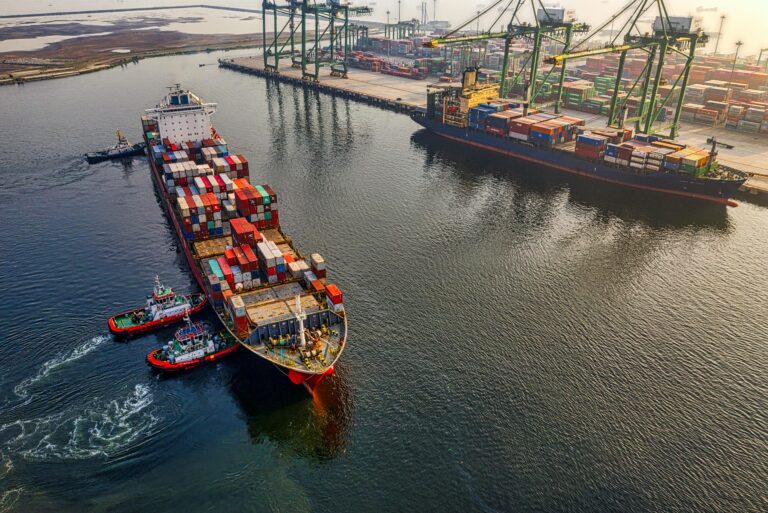Shipping may be the last stage of the cross-border shopper journey, but that doesn’t lessen its importance – in fact, it might just increase it.
58% of Gen Z shoppers won’t shop with a retailer again if they have had a bad shipping experience and 54% of the same will abandon a cart altogether due to expensive shipping. Managing shipping to ensure an excellent customer experience, especially in international markets where there are other factors to consider such as language and customer support accessibility, will increase conversions and ensure return customers.
Retailers who are considering expanding their ecommerce business into international markets will find that there are many considerations to be aware of that are not relevant to domestic shipping.
Here are 6 key factors to consider:
1. Know your product
The amount of information required to ship international orders exceeds what domestic ecommerce businesses are used to. Retailers will need to have – and be able to supply when necessary – detailed records of the materials and intricacies of products to ensure accurate product descriptions and therefore, accurate duty and tax declarations that will ensure a frictionless customs clearance process.
Certain goods or products have sales restrictions in particular markets or areas. These restrictions can be due to trade embargoes, or political and cultural policies. This means that the retailer needs to know the origins of the product or even some of its constituent parts. Countries may attempt to protect indigenous industries by placing higher duties and taxes on particular types of imports, which can affect the profitability of selling certain product types into some countries.
2. Dangerous goods
Dangerous goods require additional levels of information and are subject to UN Codes of regulation. This can affect where or even if they can be shipped. In addition, packaging can be subject to regulations and tests. These include drop or stack tests to make sure that goods can travel, and the packaging is fit for purpose.
Dangerous goods include those that are not ‘dangerous’ ordinarily but are classified as such when shipping. such as perfume or any product containing alcohol. Different customs areas will have different rules and regulations around dangerous goods being moved within country and from country to country via road and sea freight. However, air freight falls under globally observed IATA regulation.
3. Lead times
When assessing which carriers to use for both shipping and final mile delivery and returns, fully consider the entire delivery process prior to committing to lead times at the checkout. Factor in processing time at origin and destination, potential customs hold, and if lead time is location specific, ensure caveats regarding remote area deliveries are in place – eg ‘Remote locations may be subject to slightly longer delivery times.’ Block space agreements can help in meeting delivery times. These agreements can guarantee space for air freight movements for predictable order volume. But they can be costly if not managed correctly because the cost will be incurred, regardless of whether the space is used.
4. Final Mile Carriers
Final mile delivery tends to be the most challenging and costly part of the supply chain so selecting a carrier for each market and region will require a thorough investigation of the local options, and how they meet the desired customer experience. Ask the right questions to find out what charges to expect and find out potentially hidden information such as extra costs for remote areas. Different carriers may also not be able to facilitate certain dangerous goods, so knowing which products are going where will help the assessment.
Final mile carriers also offer a variety of different ‘in-flight’ options in the market. In-flight pertains to the shoppers’ ability to alter delivery whilst the goods are in motion to them eg changing a delivery address from home to business en route. This option can greatly improve the shopper user experience with a retailer’s service but can be more costly.
5. Customs
Customs can be difficult to navigate as each individual country or customs union will have its own rules which will not always align with each other.
Typically, a customs clearance within the EU requires the retailer to complete a Single Administrative document (SAD), which the operator completes all or part thereof depending on the type of operation. It usually requires the following information:
- Identifying data of the parties involved in the operation (importer, exporter, representative, etc.)
- Custom approved treatment (release for free circulation, release for consumption, temporary importation, transit, etc.)
- Identifying data of the goods (Tariff code, weight, units), location and packaging
- Information referred to the means of transport
- Data about country of origin, country of export and destination
- Commercial and financial information (Incoterms, invoice value, invoice currency, exchange rate, insurance etc.)
- List of documents associated to the SAD (Import licenses, inspection certificates, document of origin, transport document, commercial invoice etc.)
- Declaration and method of payment of import taxes (tariff duties, VAT, Excises, etc)
6. Returns
Returns are an important aspect of the shopper journey, with a recent Narvar survey finding 95% of online shoppers willing to repeat purchase after experiencing a satisfactory returns process. 82% of respondents revealed they returned to online stores after successfully returning items.
Additionally, the returns policy itself is very important as to how shopper views the retailer. More than two-thirds of shoppers saying they’re deterred by having to pay for return shipping (69%) or restocking fees (67%). And 17% said they would not make a purchase without the option to return to a store.
While free shipping helps conversions, with 63% of females and 53% of males saying they would shop online more if retailers offered free shipping and returns, it is an area that can be open to exploitation if not managed carefully. To counteract any abuse of a free shipping threshold, merchants can assign flags to customers who routinely return items that they bought just to get them over the threshold.
Conclusion
Shipping is a primary driver of a great customer experience. Geographic distance and the regulatory environments of individual countries can have a large impact on the final cost to the shopper and the quality of their engagement with the brand. Undoubtedly this is a challenge for retailers, especially when shipping to multiple markets that are both geographically and culturally diverse. Working with a specialist partner can take the complexity out of this challenge, and help the brand deliver a great experience across borders.





